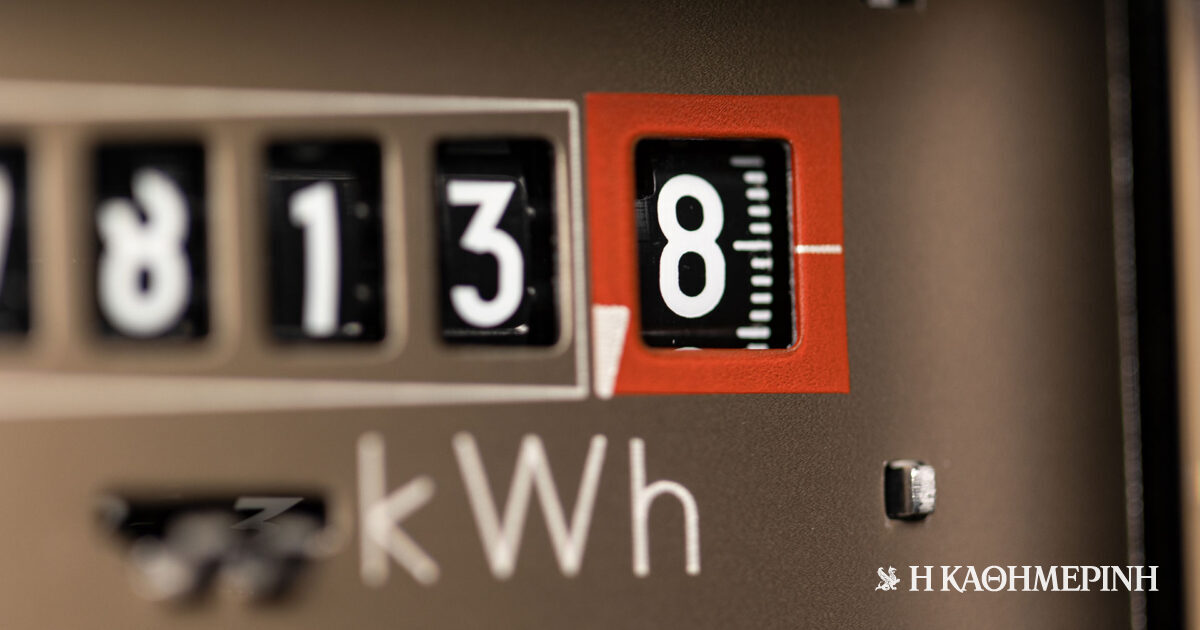
There are only a few days left until the first display of the colored bills electricitywhich according to the Ministry of Energy and Environment is expected to make it easier for consumers to choose a contract with energy providers.
As the Ministry noted, every consumer will now know exactly what they pay to their electricity provider and what kind of tariff they charge.
As announced, the new electricity tariff will be in four colors: blue for fixed, green for private, yellow for variable, and orange for dynamic.

Hours ago, the Ministry of Energy and Environment published a video aimed at making it easier for the consumer public to choose the program, noting that work is underway to create “a unified electricity tariff mark for all companies,” in order to make it easier for “consumers to choose based on their needs.” “Green: New special tariff. You can easily compare and find out the cheapest provider. Blue: fixed definitions. Yellow: floating tariffs. Orange: dynamic definitions. You can compare and choose based on prices and your needs. The video says: Our priority is the interest of the consumer.
What consumers should know
Those consumers who do not opt for the tariff by December 31 are automatically included in the special green tariff.
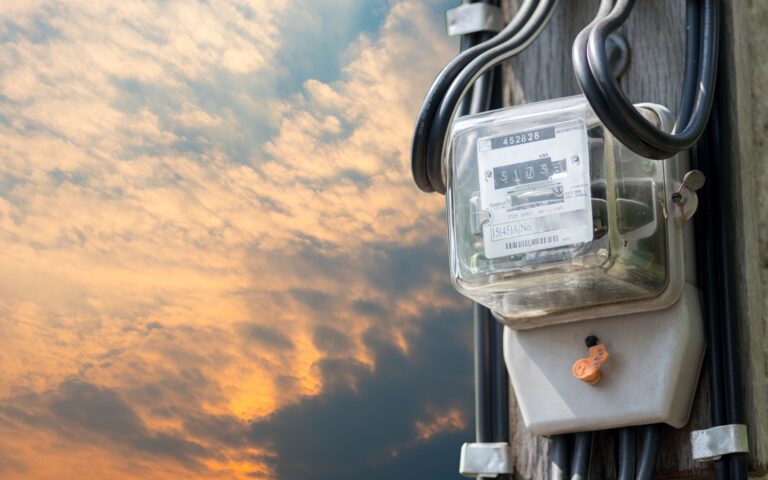
Consumers should also be aware of this Fixed tariffs have an early exit clause, unlike floating tariffsWhich can be changed at any time without any fees.
Those who choose the blue (flat) tariff will be guaranteed a low price for six months or a year, But assuming the risk of a possible further escalation in wholesale pricesWhich they will not benefit from, unlike those who choose the floating tariff.
We are introducing a unified markup on electricity tariffs for all companies, with the aim of making it easier for consumers to choose based on their needs. Our priority is the interest of the consumer.
More information here: https://t.co/HEg0WZWskf pic.twitter.com/XrSl8h1XTZ— Ministry of Environment and Energy (@YpenGr) December 13, 2023
Analytically:
In the special joint invoice, with Green marksThe supplier will announce the invoice price by the first day of the month the order is placed and consumers will know from the beginning of the month the price at which they will be invoiced.
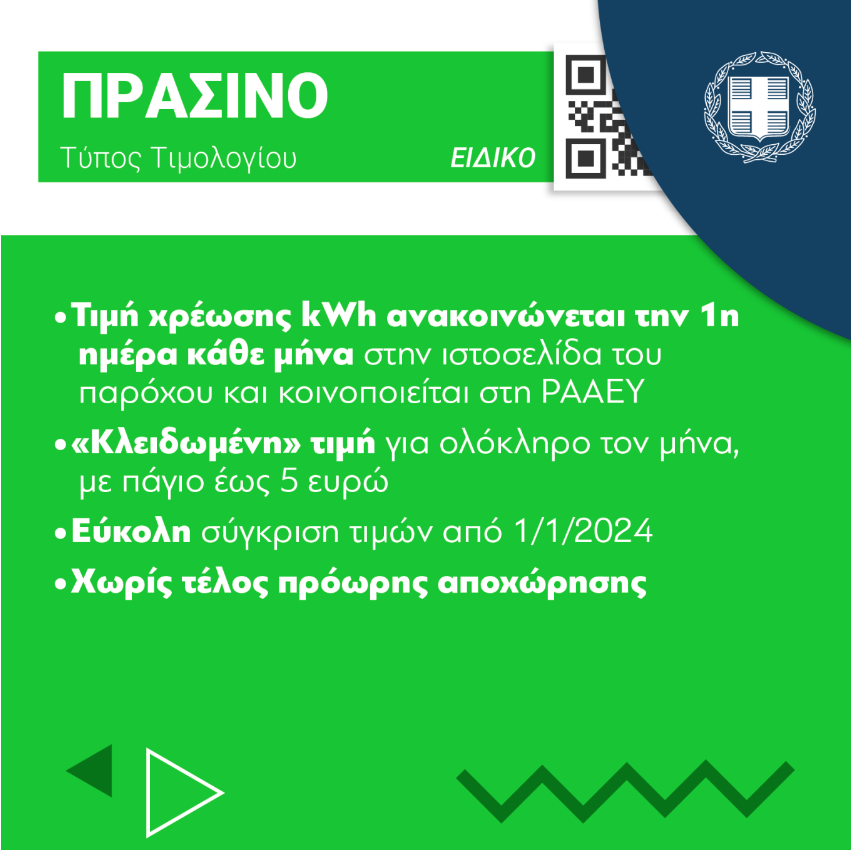
The fixed tariff will have Blue marks A fixed supply price per kilowatt hour will not change throughout the entire contract period.
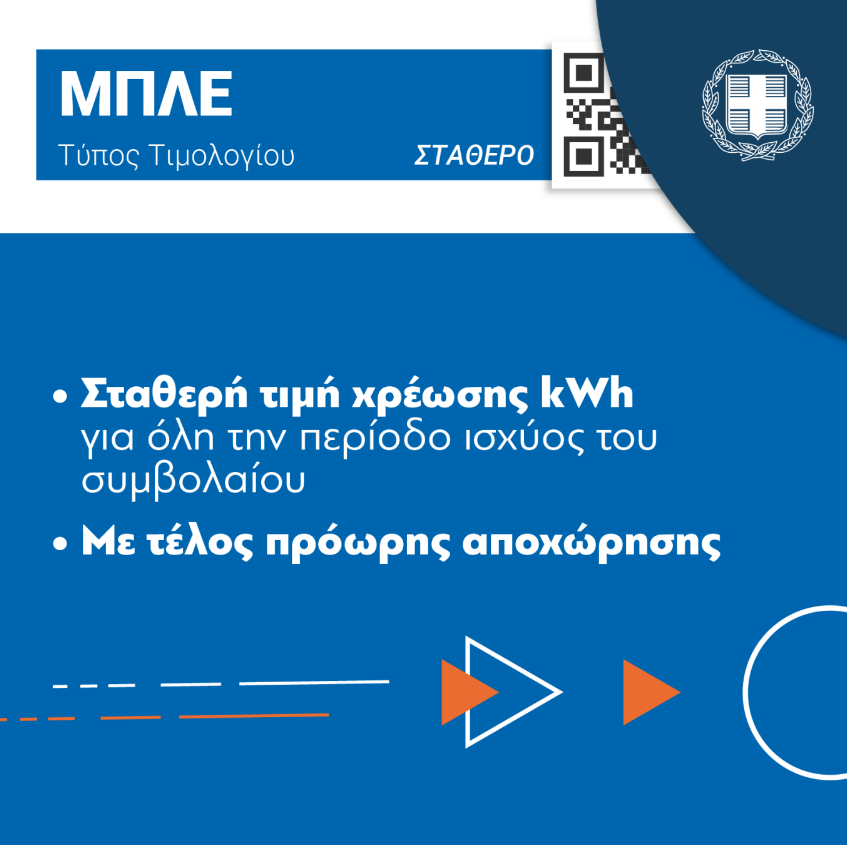
the Yellow billWhich includes a tariff with a variable supply charge, the price changes according to the fluctuations of the wholesale electricity market (adjustment clause) and is announced to consumers at the end of each month (post tariff).
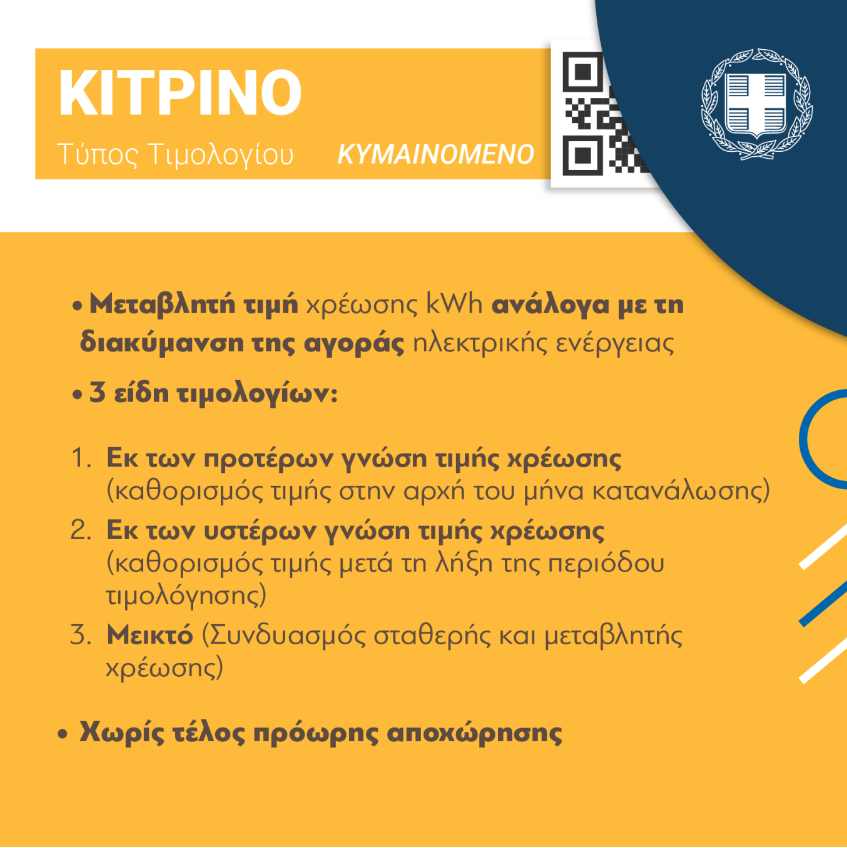
In the dynamic invoice with Orange marks The price changes again, but the condition for selection is the “smart” meter function.

Questions – answers about the new definitions
1. Why do we have so many electricity bills?
Because service providers have the right to receive as many bills as they want. Also because the nature of the electricity purchasing system implemented by the European Union is complex. There is a wholesale market where the price fluctuates (constantly changes by the day and hour). There are retail providers, who buy wholesale and sell retail, with many different trading policies. Moreover, because the needs and desires of consumers are completely different, depending on the profile of each consumer (family, business, energy-intensive consumers, etc.).
2. What kind of definitions are there?
To begin with, there are three types of tariffs (fixed, variable and dynamic) and the consumer (whether a household or a business) chooses what they consider to be the most beneficial to them. More specifically:
- Fixed invoices are fixed term invoices, with a fixed invoice price for the entire duration of the contract.
- Tariffs linked to the wholesale price on the energy exchange fluctuate. These are divided into two main categories: i. By setting the price in advance for the consumption period and ii. With prices yet to be determined.
- Dynamic, which refers to the possibility of dynamic pricing, at different prices – even during the day – based on market prices. One of the conditions for choosing these tariffs is the remote operation of a smart meter in the supply to consumers.
For the convenience of the consumer, bills have been linked to color. Solid blue, volatile yellow, and dynamic orange. A special green tariff is added to these tariffs, the special advantage of which is that its structure will be simple and common, allowing comparability for all providers.
All consumers will switch to this, on January 1, 2024, who – during 2023 – will not choose a specific type of tariff for their switch on January 1, 2024. However, by simple declaration to their service provider by 01/31/2024, they can remain on Their previous acquaintance. Also, for any tariff changes made after that, the usual procedure is followed. It should be noted that the special green tariff, which will be available from each provider, will be uniform for all providers.
3. Why was this special green tariff introduced?
The main advantage of the green tariff is that it facilitates, for the first time, price comparison between service providers and transparent and simplified information to consumers about service providers’ prices. On the first day of each month, the invoice price will be announced on the website of the relevant provider and will be sent to the Financial Services Authority. The consumer will know at the beginning of the month what they are paying to their electricity provider, what their bill rate is for the month and, most importantly, what rates are offered by all other providers.
4. On the green bill, will the price change during the month?
No, the consumer will see the price on every first of the month, which will be “locked in” for the entire month.
5. Can the consumer choose a tariff other than the one he has?
Yes, the consumer has the ability to choose any tariff offered at any time by signing a new contract with the provider of his choice. The only exception is fixed tariffs, which by their nature have long-term contracts. Change of supplier or supply invoice, i.e. takes place at any time and does not entail the right to compensate the supplier due to early departure of the customer, except in cases of termination of the fixed price invoice contract.
6. Why do we have different colors on invoices?
To make it easier for the consumer to understand the nature of the many different tariffs so that he can better compare tariffs between service providers.
7. Isn’t this system very “confusing”?
Yes, the European energy system is complex and it makes sense for the consumer that they do not have the time and inclination to constantly deal with any provider they choose. That is why the “green” tariff was introduced, in which he knows, without particularly participating, the two most important things that interest him: firstly, what is the price per month, and secondly, who is cheaper per month.
8. Should I switch providers every month to find the cheapest one?
You have the right to do so. On the green tariff, you can track which provider is the cheapest every month, and if you are not satisfied with the provider’s prices for a month or after a few months, you can always switch. It is reasonable for the consumer not to enter into this process, because it is difficult to change the provider for a difference of 1-2 euros per month. It is also logical that if he sees that someone is systematically expensive, he will leave him and go to someone who is systematically cheaper than him.
9. Why can’t I, who has a fixed blue tariff with a particular provider, compare prices with other providers?
In contrast to each provider’s own (green) bill, in the remaining tariff categories, service providers can offer more than one bill in each category, connected, multiple times, either to services or to other products or to a combination of them. In addition, the amount of the fixed amount can vary significantly for each provider, which reduces the degree of comparability between the energy prices offered. For these reasons, the creation of a green tariff makes comparing tariffs of different service providers more direct, easy and transparent.
10. Will a price check and comparison tool be available?
In electricity bills (electronic and printed) and in letters and other emails that providers will send to consumers, there will now also be a QR code (scanned and read via smartphone) and a link pointing to the Waste, Energy and Water Regulatory Authority’s published price comparison tool website ( RAAEF). There, consumers will be able to view monthly the price of their provider’s own and combined tariffs and compare it with all the tariffs offered.

“Avid problem solver. Extreme social media junkie. Beer buff. Coffee guru. Internet geek. Travel ninja.”





More Stories
“Recycling – Changing the water heater”: the possibility of paying the financing to the institution once or partially
Libya: US General Meets Haftar Amid Tensions Between Governments
New tax exemption package and incentives for business and corporate mergers..